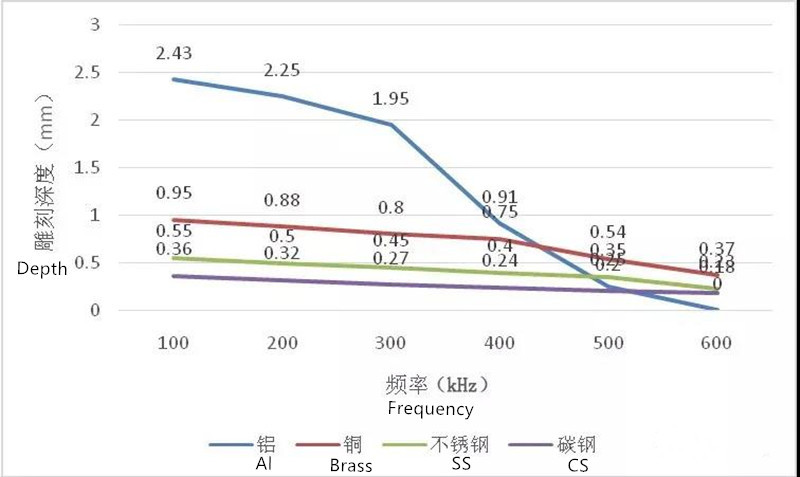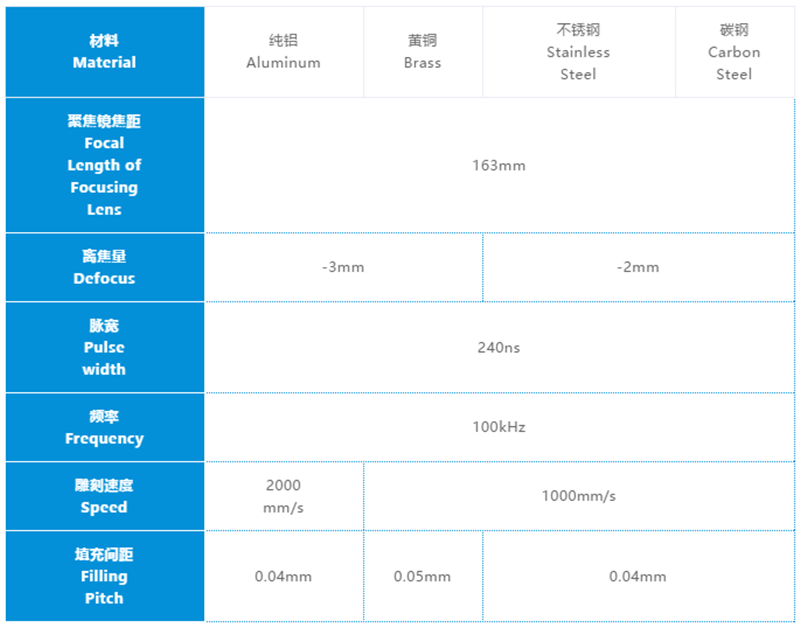In the application of Molds, Signs, Hardware Accessories, Billboards, Automobile license plates and other products, traditional corrosion processes will not only cause environmental pollution, but also low efficiency. Traditional process applications such as machining, metal scrap and coolants can also cause environmental pollution. Although the efficiency has been improved, the accuracy is not high, and sharp angles cannot be carved. Compared with traditional metal deep carving methods, laser metal deep carving has the advantages of pollution-free, high precision, and flexible carving content, which can meet the requirements of complex carving processes.
Common materials for metal deep carving include carbon steel, stainless steel, aluminum, copper, precious metals, etc. Engineers conduct high-efficiency deep carving parameter research for different metal materials.
Actual case analysis:
Test platform equipment Carmanhaas 3D Galvo Head with Lens(F=163/210)carry out deep carving test. Engraving size is 10 mm×10 mm. Set the initial parameters of engraving, as shown in Table 1. Change the process parameters such as the amount of defocus, pulse width, speed, filling interval, etc., use the deep carving tester to measure the depth, and find the process parameters with the best carving effect.
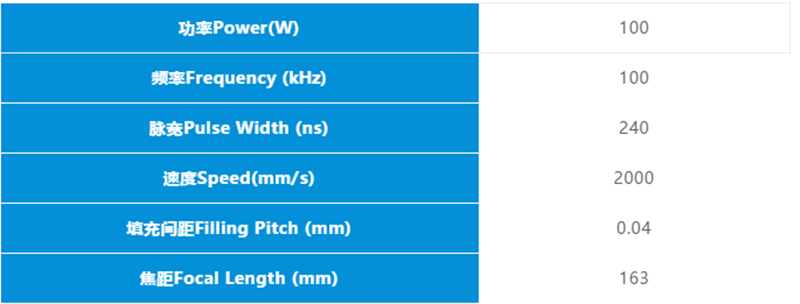 Table 1 Initial parameters of deep carving
Table 1 Initial parameters of deep carving
Through the process parameter table, we can see that there are many parameters that have an impact on the final deep engraving effect. We use the control variable method to find the process of each process parameter’s effect on the effect, and now we will announce them one by one.
01 The effect of defocus on carving depth
First use the Raycus Fiber Laser Source, Power:100W, Model: RFL-100M to engrave the initial parameters. Carry out the engraving test on different metal surfaces. Repeat the engraving 100 times for 305 s. Change the defocus and test the effect of the defocus on the engraving effect of different materials.
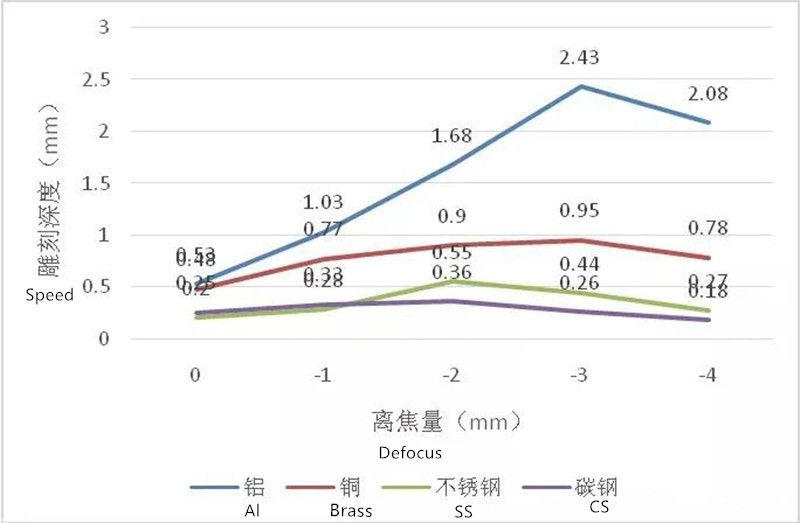 Figure 1 Comparison of the effect of defocus on the depth of material carving
Figure 1 Comparison of the effect of defocus on the depth of material carving
As shown in Figure 1, we can get the following about the maximum depth corresponding to different defocusing amounts when using RFL-100M for deep engraving in different metal materials. From the above data, it is concluded that deep carving on the metal surface requires a certain defocus to get the best engraving effect. The defocus for engraving aluminum and brass is -3 mm, and the defocus for engraving stainless steel and carbon steel is -2 mm.
02 The effect of pulse width on carving depth
Through the above experiments, the optimal defocus amount of RFL-100M in deep engraving with different materials is obtained. Use the optimal defocus amount, change the pulse width and corresponding frequency in the initial parameters, and other parameters remain unchanged.
This is mainly because each pulse width of the RFL-100M laser has a corresponding fundamental frequency. When the frequency is lower than the corresponding fundamental frequency, the output power is lower than the average power, and when the frequency is higher than the corresponding fundamental frequency, the peak power will decrease. The engraving test needs to use the largest pulse width and maximum capacity for testing, so the test frequency is the fundamental frequency, and the relevant test data will be described in detail in the following test.
The fundamental frequency corresponding to each pulse width is:240 ns,10 kHz、160 ns,105 kHz、130 ns,119 kHz、100 ns,144 kHz、58 ns,179 kHz、40 ns,245 kHz、20 ns,490 kHz、10 ns,999 kHz。Carry out the engraving test through the above pulse and frequency, the test result is shown in Figure 2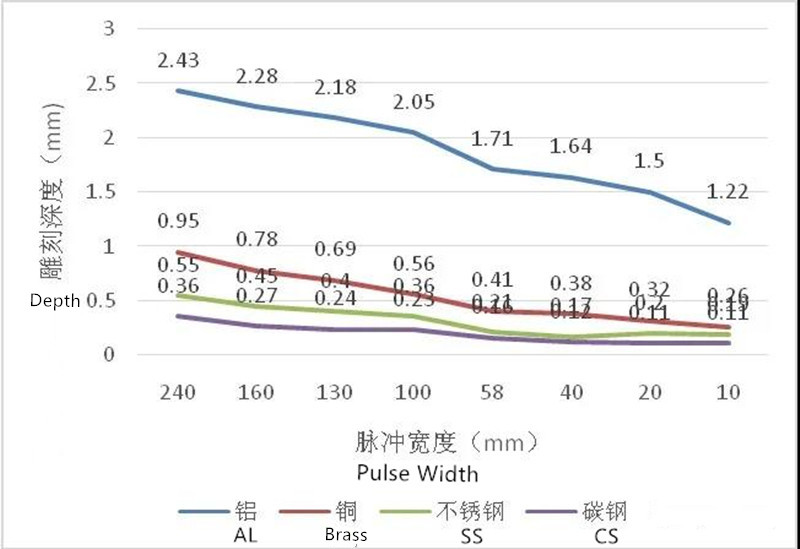 Figure 2 Comparison of the effect of pulse width on engraving depth
Figure 2 Comparison of the effect of pulse width on engraving depth
It can be seen from the chart that when RFL-100M is engraving, as the pulse width decreases, the engraving depth decreases accordingly. The engraving depth of each material is the largest at 240 ns. This is mainly due to the decrease of the single pulse energy due to the reduction of the pulse width, which in turn reduces the damage to the surface of the metal material, resulting in the engraving depth becoming smaller and smaller.
03 Influence of frequency on engraving depth
Through the above experiments, the best defocus amount and pulse width of RFL-100M when engraving with different materials are obtained. Use the best defocus amount and pulse width to remain unchanged, change the frequency, and test the effect of different frequencies on the engraving depth. The test results As shown in Figure 3.
Figure 3 Comparison of the influence of frequency on material deep carving
It can be seen from the chart that when the RFL-100M laser is engraving various materials, as the frequency increases, the engraving depth of each material decreases accordingly. When the frequency is 100 kHz, the engraving depth is the largest, and the maximum engraving depth of pure aluminum is 2.43. mm, 0.95 mm for brass, 0.55 mm for stainless steel, and 0.36 mm for carbon steel. Among them, aluminum is the most sensitive to changes in frequency. When the frequency is 600 kHz, deep engraving cannot be performed on the surface of aluminum. While brass, stainless steel and carbon steel are less affected by frequency, they also show a trend of decreasing engraving depth with increasing frequency.
04 Influence of speed on engraving depth
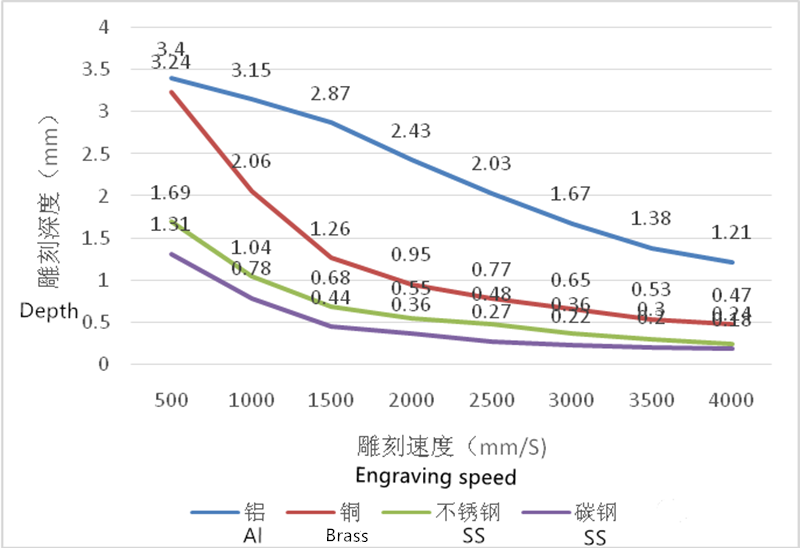 Figure 4 Comparison of the effect of carving speed on carving depth
Figure 4 Comparison of the effect of carving speed on carving depth
It can be seen from the chart that as the engraving speed increases, the engraving depth decreases accordingly. When the engraving speed is 500 mm/s, the engraving depth of each material is the largest. The engraving depths of aluminum, copper, stainless steel and carbon steel are respectively: 3.4 mm, 3.24 mm, 1.69 mm, 1.31 mm.
05 The effect of filling spacing on engraving depth
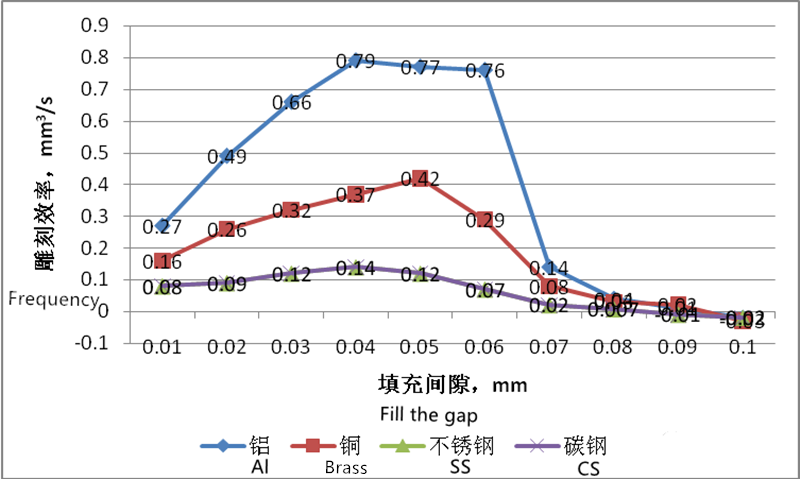 Figure 5 The effect of filling density on engraving efficiency
Figure 5 The effect of filling density on engraving efficiency
It can be seen from the chart that when the filling density is 0.01 mm, the engraving depths of aluminum, brass, stainless steel, and carbon steel are all maximum, and the engraving depth decreases as the filling gap increases; the filling spacing increases from 0.01 mm In the process of 0.1 mm, the time required to complete 100 engravings is gradually shortened. When the filling distance is greater than 0.04 mm, the shortening time range is significantly reduced.
In Conclusion
Through the above tests, we can get the recommended process parameters for deep carving of different metal materials using RFL-100M:
Post time: Jul-11-2022

